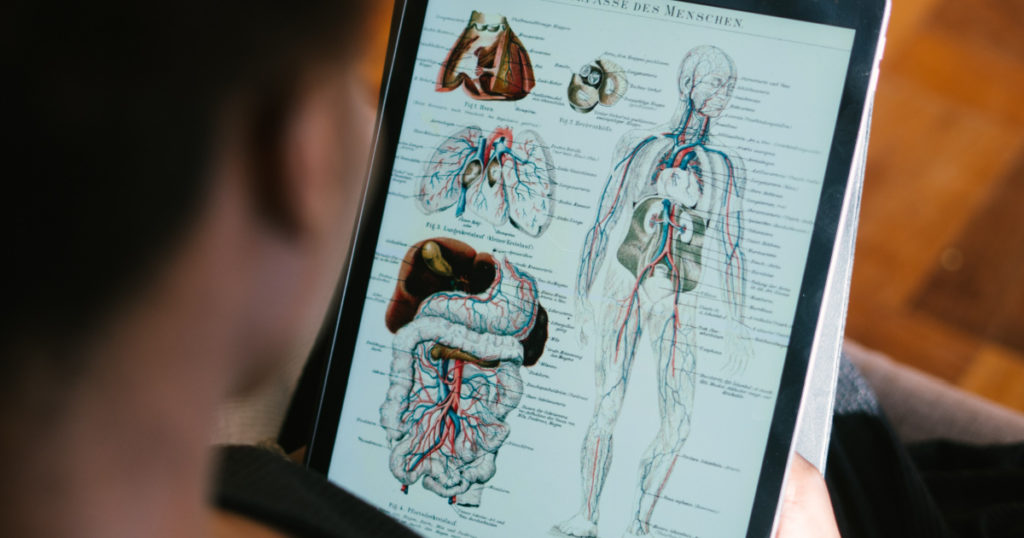
As much as I love watching some classic Elvis shows in Vegas, new studies on the vagus nerve and its implications to those with autism spectrum disorders make me sing, “Viva Las Vagus!” We can now understand so much more about the reasoning behind some of the behaviors that those with autism exhibit because of their neurology. Science can now explain how “vagal tone” influences social behavior, immune function, digestion, detoxification and heart rate. Having a better understanding of functional neurology allows doctors to give hope for autism recovery. Let’s first start with some understanding of the vagus nerve and what it’s responsible for. I’ll then introduce what can happen when the vagus nerve is stressed, what can cause stress to the vagus nerve and finally how to correct the imbalance to bring about an optimally functioning nervous system.
The vagus nerve is the longest nerve in the body that originates in the brainstem. It has branches that travel throughout the head and control a various amount of functions. Some of these cranial branches travel to the ear affecting how we hear, our throat affecting how we speak and our eyes affecting how we focus and attend to other people. The vagus nerve works in conjunction with oxytocin receptors in the brain, which stimulates feelings of bonding, attraction and love. This is the “social” component of the vagus nerve. When functioning to this critical component of the vagus nerve is compromised, it will have negative affects on sensory processing, socialization, speech, vision, hearing and focus.
The vagus nerve also has two branches that travel down each side of the neck and extend throughout the body. This critical nerve is part of what is called the autonomic nervous system, which automatically regulates the functions our mind does not consciously control. Working separate from our conscious mind, our autonomic nervous system is responsible for controlling essential and vital body functions. It consists of two components; the sympathetic and parasympathetic nerve systems. The parasympathetic nervous system is responsible for stimulation when the body is at rest and ease- including digestion, salivation, immune response, reproduction and in the brain, it enhances mindfulness and executive functioning. Think of the parasympathetic nervous system as the brake pedal in your car, slowing things down. The sympathetic nervous system is responsible for stimulating activities associated with the fight or flight response and perceived danger. It involves increased heart rate, blood pressure, muscle energy and stimulates the hind brain or the “survival” mind. Think of this system as the gas pedal in your car, speeding things up. The vagus nerve is part of the parasympathetic nervous system and when functioning properly, inhibits the sympathetic nervous system.
What comes next is most critical in understanding this complex nerve. A malfunctioning vagus nerve can cause the autonomic nervous system to be locked in a constant state of “fight or flight”. When the autonomic system is in “syspathetic overload”, a whole host of health problems can follow including but not limited to: sensory processing disorder, sleep problems, speech problems, digestive disorders, difficulties with social interactions, immune system suppression and difficulty detoxifying…just to name a few!
It is important to note that because of the location of this vital nerve and its association with vertebra in the upper neck, a misaligned C1 or C2 vertebrae would be a major contributor to a malfunctioning vagus nerve. Intrauterine constraint on the fetus, as well as birth trauma due to cesarean section, births with medical interventions like vacuum or forceps extraction and even the use of epidurals and Pitocin can all contribute to birth trauma and cause vertebral misalignment. This nerve stress caused by vertebral misalignment is called a subluxation by the chiropractic profession. Following birth, many other slips, falls and tumbles can cause subluxation as well. (Interesting to note, mercury toxicity can also interfere with normal vagus nerve function).
There are many ways to bring the vagus nerve back into a healthy, balanced tone. One of the most effective and successful techniques is the chiropractic adjustment. Finding a neurologically based, pediatric chiropractor is a must-have in your arsenal of doctors to bring about recovery. You can find many of these chiropractors on the Generation Rescue website as well as on the International Chiropractic Pediatric Association’s website (ICPA4kids.org). You can also do research on the ICPA’s website regarding chiropractic and autism. Other activities can also stimulate the vagus nerve like: playing (running, jumping, spinning, bicycling, etc.,), deep breathing, meditation, auditory integration training, drumming, hyperbaric oxygen therapy and cranial-sacral therapy.
When looking to improve your child’s health on every level; from improved brain and neurological function to immune system enhancement, from social well-being to improved digestion and detoxification, look well to the spine to improve nervous system and vagal tone. Viva Las Vagus!
